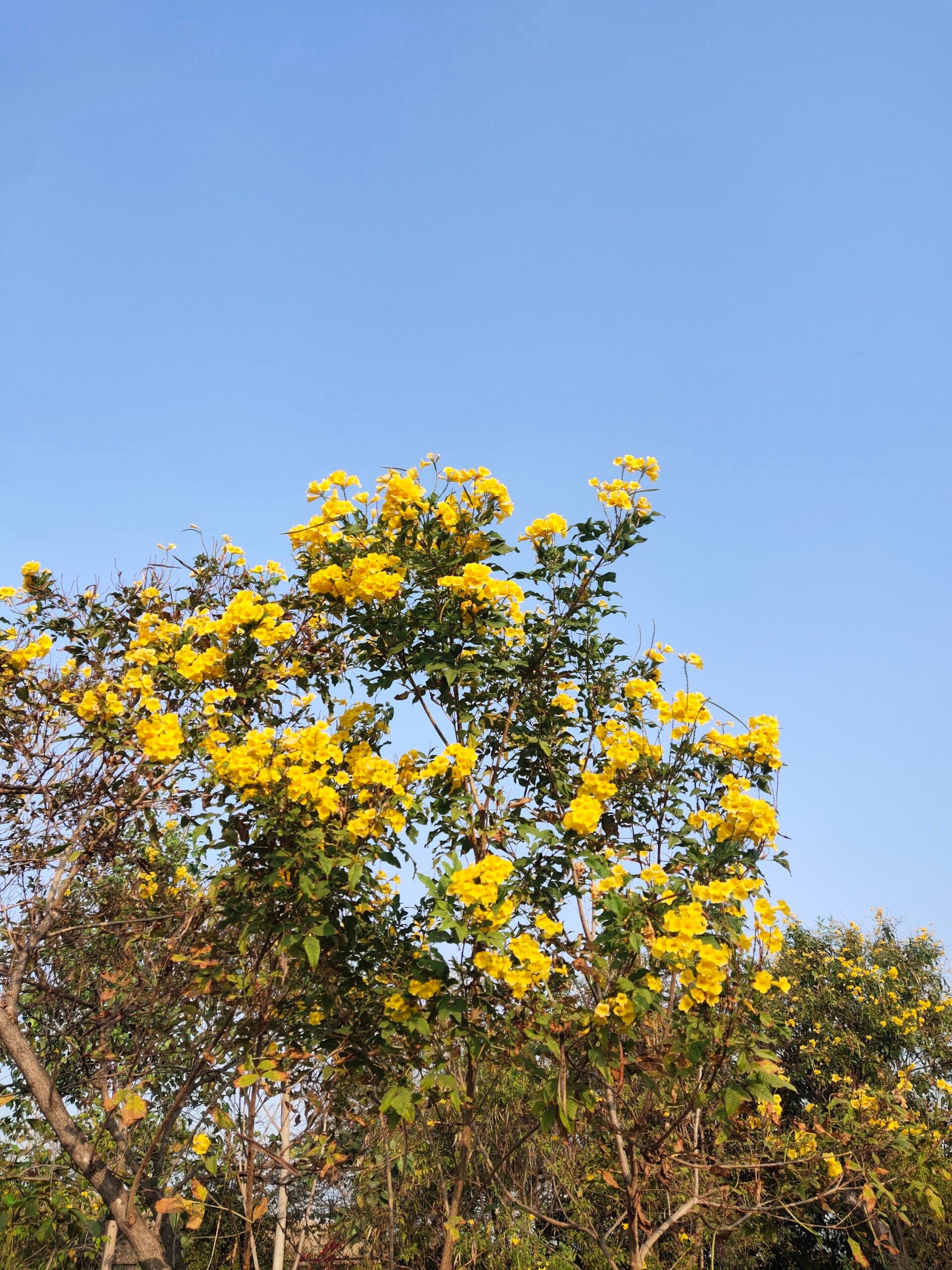YELLOW BELLS

listen about me
Tecoma stans (L.) Juss. ex Kunth
Classification:
Division- Gamopetalae
Class- Dicotyledoneae
Series- Bicarpellatae
Order- Lamiales
Family- Bignoniaceae
Genus- Tecoma
Species- stans
Plant Name- Tecoma stans (L.) Juss. ex Kunth
Common Name-
English: Yellow bells, Yellow trumpet, Yellow-Elder
Hindi: Piliya पीलिया
Kannada: ಕೊರಾನೆಚೆಲ್ಲಾರ್ Koranechellar
Tamil: Sonnapatti
Telugu: Pachagotla
Bengali: Chandaprabha
Marathi: Ghanti ful घंटी फुल
Nepali: घट पुष्प Ghata Pushpa, सावरो Saawari
Distribution: A native to Southern Brazil, N-W Argentina and S. Bolivia to south-central South
America. In its native places, due to uncontrolled cutting for logs, clearing land for agriculture it
is declared as Vulnerable in the IUCN Red List.
Description:
It is a semi-evergreen shrub or small tree, growing up to 10 m (30 ft) tall. It features opposite odd-pinnate green leaves, with 3 to 13 serrate, 8- to 10-cm-long leaflets. The leaflets,
glabrous on both sides, have a lanceolate blade 2–10 cm long and 1–4 cm wide, with a long acuminate apex and a wedge-shaped base.
The large, showy, golden yellow, trumpet-shaped flowers are in clusters at the ends of branches. The corolla of the flower is bell- to funnel-shaped, five-lobed (weakly two- lipped), often reddish-veined in the throat and is 3.5 to 8.5 cm long. Flowering takes place from spring to fall, but more profusely from spring to summer.
The fruits, narrow capsules, arise from two carpels and are up to 25 cm long.
Fruit: A fruit contains many yellow seeds with membranous wings; when the fruit opens upon ripening, these seed are spread by the wind ( anemochory ).
Note: The flowers attract bees,
butterflies, and hummingbirds. Apart from sexually by seed, Tecoma stans can also be reproduced asexually by stem cuttings.
